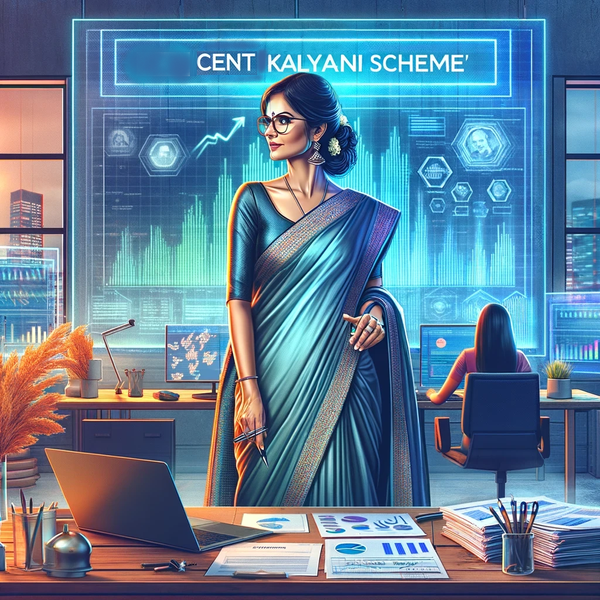Unleash the Potential of CGTMSE for Your Micro and Small Enterprise.

Are you a potential businessman who is having difficulty obtaining loans for your MSE owing to the absence of collateral or third-party guarantees? Consider the Credit Guarantee Fund Trust for Micro and Small Enterprises (CGTMSE) scheme, which can assist you in making your entrepreneurial ambitions a reality.
Launched by the Ministry of Micro, Small, and Medium Enterprises (MSME) and the Government of India, the CGTMSE initiative provides MSEs with access to formal credit without the requirement for collateral or third-party guarantees.
The scheme's goal is to strengthen the loan delivery system and facilitate credit flow to the MSE sector. This industry is a significant engine of the Indian economy. Symbolized by a colorful flying bird, the CGTMSE logo represents the energy and ambition of millions of young people across the country.
They have bankable company concepts but no funds, collateral, or third-party guarantees. By offering guarantees, CGTMSE permits these ambitious businesspeople to establish successful MSEs, transition from job seekers to job suppliers, and truly actively participate in nation-building.
MSEs can apply for a business loan of up to 200 lakhs under the scheme, with a guarantee covering 50/75/80/85 percent of the granted amount. Women entrepreneurs and borrowers in India's Northeastern states, including Sikkim and Jammu & Kashmir, are also given special consideration under the scheme.
What is CGTMSE Scheme?
The CGTMSE scheme is intended to assess the financial sustainability of MSE projects and offer term loans and compound credit schemes to suitable MSEs. This is a primary resource for first-generation entrepreneurs who want to achieve their goals.
This blog will go into greater detail on the CGTMSE scheme, including the advantages it offers, business loan criteria for eligibility, and the application process. We will also investigate how the initiative would affect the MSE sector and the Indian economy.
Don't let a lack of assets or third-party assurances prevent you from achieving your entrepreneurial goals. With the CGTMSE scheme, you can get the credit you need to start a viable MSE and contribute to the Indian economy. Let's get started.
The CGTMSE Scheme's Key Features
The CGTMSE scheme offers credit protection to the MSME sector. The following are the essential characteristics that distinguish CGTMSE as a feasible financial aid option for MSMEs:
1. Eligible industries: The scheme is open to a variety of production and service-based industries, including retail trade. This approach, however, excludes educational and training institutions, self-help groups, and agricultural activities.
2. No collateral needed: To use the credit facility at CGTMSE, you do not need any collateral or a third-party guarantee.
3. Loan amount: For MSEs, the credit facility offered within the scheme can range up to 200 lakhs. Regional Rural Banks (RRBs) and chosen financial institutions, on the other hand, have a credit facility of 50 lakhs.
4. Guarantee security: CGTMSE offers 75%-85% guarantee coverage in the event of principal loan default. This coverage, however, is only available if the primary business loan amount is up to 50 lakhs.
Understanding these elements will allow you to assess whether the CGTMSE scheme is appropriate for your MSME and harness its benefits to help your firm develop.
CGTMSE Scheme Eligibility Criteria
Financial institutions that loan to the SME and MSME sectors are qualified for a maximum credit cap of 2 crores under the CGTMSE plan. The business loan eligibility requirements for both lenders and borrowers are listed below.
1. Member Lending Institutions (MLIs): There are currently 131 MLIs, which comprise regulated commercial banks, specified Regional Rural Banks, SIDBI, NSIC, NEDFi, SFB, and NBFCs. These institutions lend to a specific industry, have joined the system, and have been recognized as eligible for the coverage.
2. Borrowers: CGTMSE coverage is available to all new and existing SMEs. For a guarantee cover of up to 62.50 lakhs/65 lakhs, the maximum credit facility is 50 lakhs.
The guaranteed cap restricts credit facilities in excess of 50 lakhs to a maximum of one crore. Term credit is provided for the entire balance that remains on the date the loan is designated an NPA or when a suit is filed.
3. Exclusions: Commercial trade, colleges and universities, agriculture, self-help organizations (SHGs), and training institutes are not covered by the CGTMSE.
Eligibility requirements for both borrowers and lenders under the CGTMSE system are well established. Lending organizations must be participants of the scheme and have an arrangement with CGTMSE or, in some cases, the Trust.
SMEs and MSMEs are eligible provided they meet specific requirements regarding credit facility amount and activity type. Learning the business loan qualifying criteria is critical for lenders as well as borrowers to reap the benefits of the plan.
Necessary Documents for the Registration Process:
You must provide the following information to complete the signup process
- The most recent Annual Report.
- Compliance evidence to the terms of MLI registration as per applicable advice
- Undertaking that is duly stamped and signed.
For additional information, please contact CGTMSE: Home
How to apply?
To apply for a business/MSME loan through the CGTMSE plan, please follow the steps below:
Step 1: Establish a Business Entity
Depending on the nature of your firm, the first step in qualifying for a small business loan via the CGTMSE plan is to register a private limited company, limited liability partnership, one-person corporation, or proprietorship. Obtain the essential permissions and tax registrations in order to carry out the project.
Step 2: Draft a Business Plan
To qualify for a small company loan through the CGTMSE program, you must do an analysis of the market and submit a business plan that includes pertinent information such as your business strategy, promoter profile, expected financials, and so on. To maximize the odds of approval, ensure that the project report is prepared by an experienced professional.
Step 3: Obtain a Bank-Approved Business Loan
Banks will examine the viability of your company model and process your loan application after you have filed your business plan and business loan application. If the bank approves the loan after a thorough analysis, it will offer credit terms along with operational capital facilities.
Step 4: Secure Guarantee Protection
Following loan approval, the bank will submit an application to the CGTMSE authority for guaranteed cover, and if the CGTMSE authorizes the loan, you will be required to pay the guarantee fee and service fees. The CGTMSE loan request form can be downloaded from the official website.
It's worth noting that CGTMSE neither provides loans nor offers credit facilities or subsidies. The CGTMSE scheme's extended list of Members of Lending Institutions (MLIs) includes 141 institutions, including all major rural, urban, public sector, and private sector banks in India.
Furthermore, CGTMSE does not affiliate with any Loan Agents or Agencies to arrange loans or credit guarantees through its MLIs.
In Conclusion, Updates to the CGTMSE Scheme for 2023:
The Indian government has allocated an additional corpus of 9,000 crores for the CGTMSE scheme in the Union Budget for the fiscal year 2023-24. The revamped scheme aims to provide an additional 2 lakh crore to MSMEs. It also proposes a number of ways to accomplish this goal.
The government has reduced assurance fees for business loans up to one crore by half, and the lowest guarantee price is now at 0.37% per year. The guarantee ceiling was additionally increased from 2 crores to 5 crores, and the minimum amount required for claim settlement without a lawsuit has been raised to 10 lakhs.
These adjustments will be extremely beneficial to the MSE sector. The COVID-19 epidemic has caused severe problems. The government's decision to lower guarantee fees and raise the guarantee threshold has made it easier for MSEs to obtain credit and financing. This step is crucial for the survival and growth of these businesses.
The increased minimum limit for claim processing without legal action will safeguard MSEs from defaulters while also assisting them in properly managing their resources.
The relaunched CGTMSE scheme is a step forward in assisting the MSE sector, which is a major driver of India's economy. The government's commitment of assistance to these enterprises will assist them in recovering from the pandemic's impact and driving future growth and innovation.




